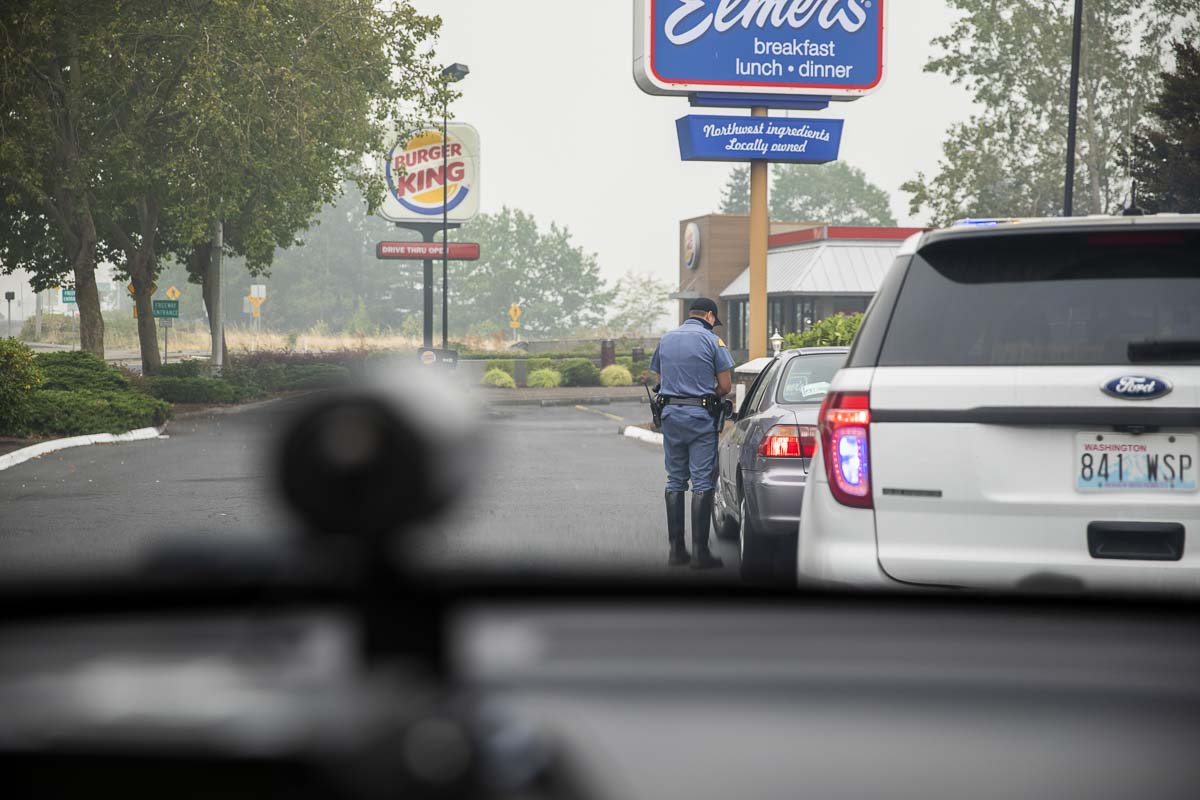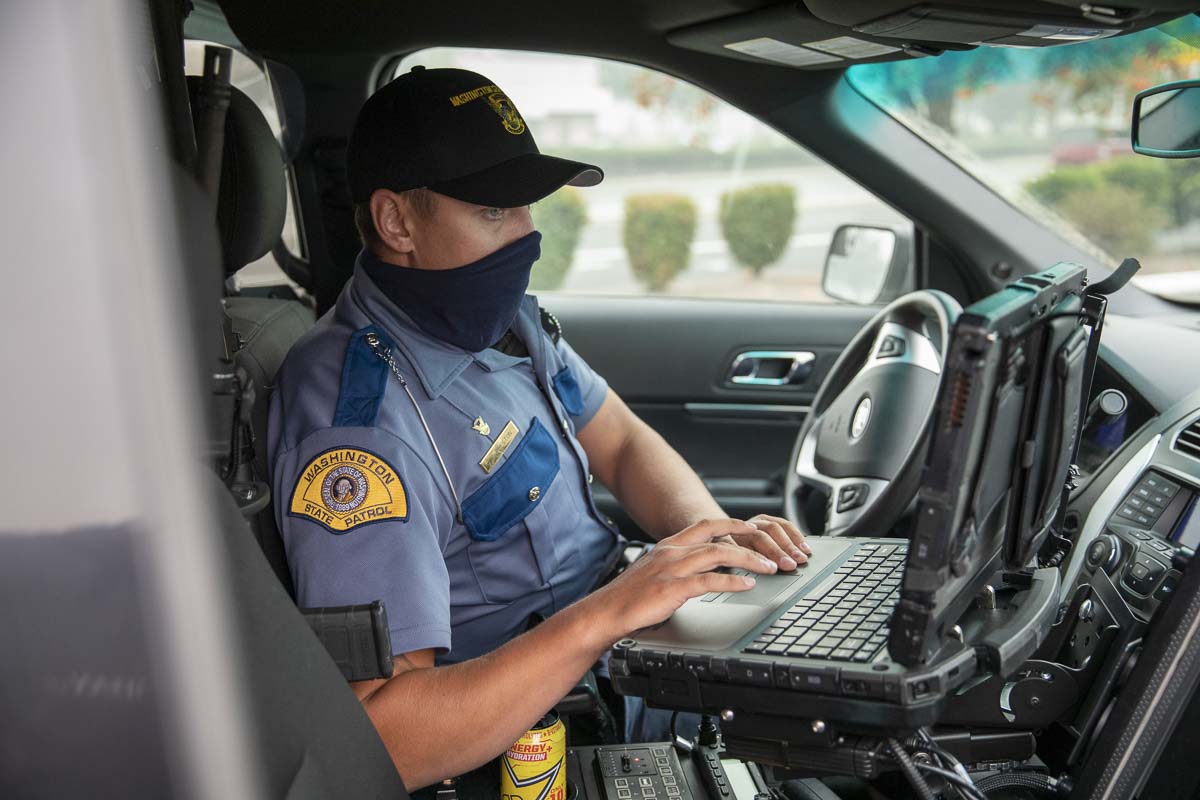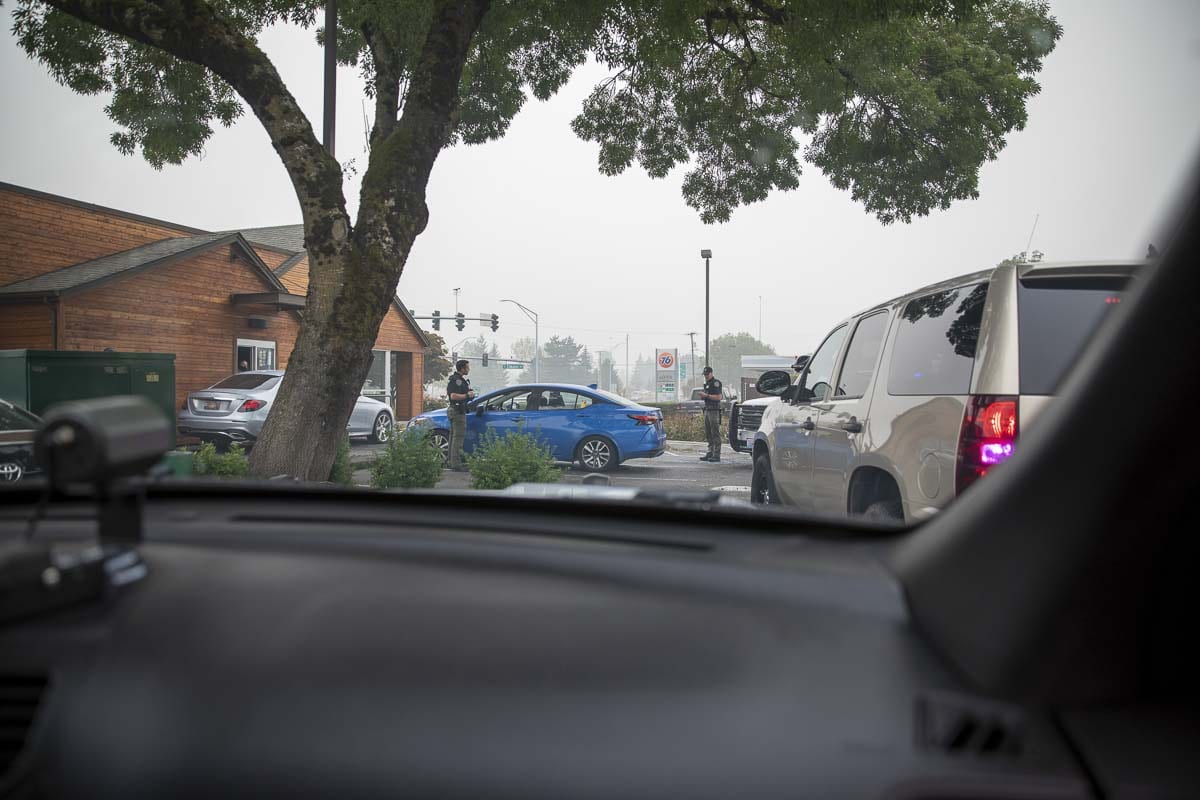Target Zero coordinates added police presence during I-5 Bridge construction
VANCOUVER — In the state of Washington in recent years, 30 percent of all fatal traffic collisions involved a distracted driver. Nearly a quarter of all crashes resulting in injury did as well.
Oftentimes, such collisions occur when a series of circumstances converge, such as traffic congestion, inclement weather or impairment.

In a preemptive response to the I-5 Bridge construction that will close the southbound span this weekend, Target Zero has partnered with law enforcement in Clark County to increase distracted driving patrols.
“There are two things that can save lives, buckling up and putting your phone out of reach when you’re driving,” said Hilary Torres, the program manager for Target Zero in Clark and Skamania counties. “I encourage everyone to make a habit of putting your phone out of your reach. That way you’re not tempted to grab it ‘just this once.’ Save your life and don’t risk the lives of others.”
Target Zero, which is a state program with the goal of eliminating traffic related fatalities in Washington by the year 2030, funds the added patrols directly by assembling the multi-agency task force. The program is funded through state grant money.
The weekend of Sept. 12 was slated to be the start of the I-5 Bridge closure to replace a cracked trunnion. Due to wildfire evacuations, that closure has been postponed to start Saturday (Sept. 19).
Target Zero’s task force for distracted driving patrols during the closure conducted stops last weekend, and participating agencies will still have more patrols during the rescheduled closure. The task force is composed of officers from the Clark County Sheriff’s Office (CCSO), the Vancouver Police Department (VPD) and the Washington State Patrol (WSP).
“We have so much capability with these cell phones right now, to do email, to search the internet, to play games, watch news reports or movies,” said Sgt. Therese Kubala with VPD. “What we do is we put out a spotter that’s in plain clothes, that just basically radios to us what the person’s doing and what the plate number and description of the car is. They’ll notify the officers parked down at a location in the direction that the traffic is flowing, and they’ll pull that person over and site accordingly.”

This is the method used by multiple agencies across the country, Kubala said. During something like the bridge closure, gridlock traffic is notorious for causing people to use their phones. In 2018, 12 people died as a result of distracted driving in Clark County. Eight of those fatalities were in Vancouver alone, Kubala said.
WSP Trooper Will Finn works with Target Zero on the state side for this region, and aided in the patrols on Sept. 12. During such operations many times officers will end up finding additional infractions on top of driving distracted, he explained.
In a span of just over an hour, the task force made more than five traffic stops and one arrest on Sept. 12; in the area of Mill Plain, Chkalov and I-205. In one case, Trooper Tyler Preston stopped a driver who was seen texting while driving and discovered he was also driving without a license.
In the case of the arrest, Clark County Sheriff’s deputies Ryan Preston and Todd Young stopped a blue sedan for texting and driving. The driver attempted to evade the deputies, but was cornered in a nearby parking lot. Upon interacting with the driver, it became evident he was not only texting, but actively using marijuana while driving as well. The driver was arrested.
“We all go to the table with different disciplines, our [WSP’s] bread and butter is impaired drivers,” Finn said. “Even though the county and city still remove impaired drivers off the road, they have a different function. In anticipation of the [bridge] closure, we have scheduled additional units down in that area. Those units will be on motorcycles because they’re able to navigate in and out of that traffic pretty easily.”

The first time infraction if you are caught driving distracted is $136, and will increase to $200 the second time around. All infractions are reported to your insurance provider, and in some cases are un-removable from the record. Additional infractions found in parallel to driving distracted are sited separately.
The commonly referenced “one touch rule’’ that allows drivers to access their mobile device from a holder with one finger at a stop light, does not mean they can repeatedly touch the device once with one finger, Kubala also noted. Such behavior will be sited as driving distracted, she said.
Also read:
A crash course on how not to crash during the rescheduled I-5 Bridge closure





